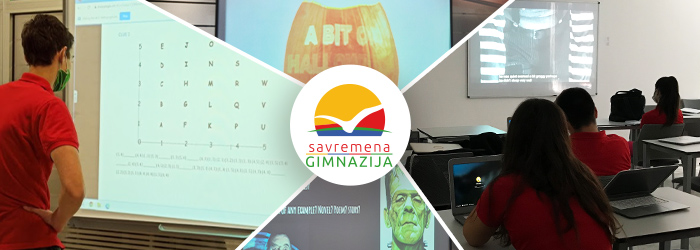
Teachers at Savremena didn’t miss the opportunity to celebrate Halloween this year, one of the favourite holidays not only among children, but young people as well. Given the current epidemiological situation, the school was not decorated for Halloween this year, but nevertheless, English and philosophy classes in the days preceding October 31 and Halloween were dedicated to this holiday.

Testing knowledge and language skills through a fun approach to learning
The topic of Halloween has been traditionally discussed in English classes, and this year, students of all grades took part in this, in line with their knowledge and language skills. While the first-graders watched a video about the interesting history of this holiday and did a Kahoot quiz, second-graders were trying to find parallels between gothic literature, Frankenstein and other popular novels, and Halloween. Third-graders who attend the Combined Programme listened to the horror story Laughing Jack and analysed stylistic devices and other literary elements used to enhance the sense of fear and dread, thus preparing for assignments that await them in Cambridge exams, after which they shared opinions on horror films and stories in Nearpod. Fourth-graders first read the famous poems of Edgar Allan Poe, The Raven and Annabel Lee, and then discussed their value. Some students were given additional tasks to write a review of a horror film they had watched.
Those students who applied for the English TEA Time school club were given their first language challenge: their task was to write a short story or poem in English, inspired by scary-sounding sentences.
What’s even more interesting is that the Philosophy and Logic teacher, Marica Đurić joined the celebration of this holiday by giving students a murder mystery to solve. This way, she encouraged students to take interest in the case, analyse available data and solve the problem task before them using logical reasoning.
This is proof that Halloween is not just about fun, games and scary costumes, but that it can be used for education and to encourage an interdisciplinary approach to learning, provided that the activities are practical and well-designed.

















